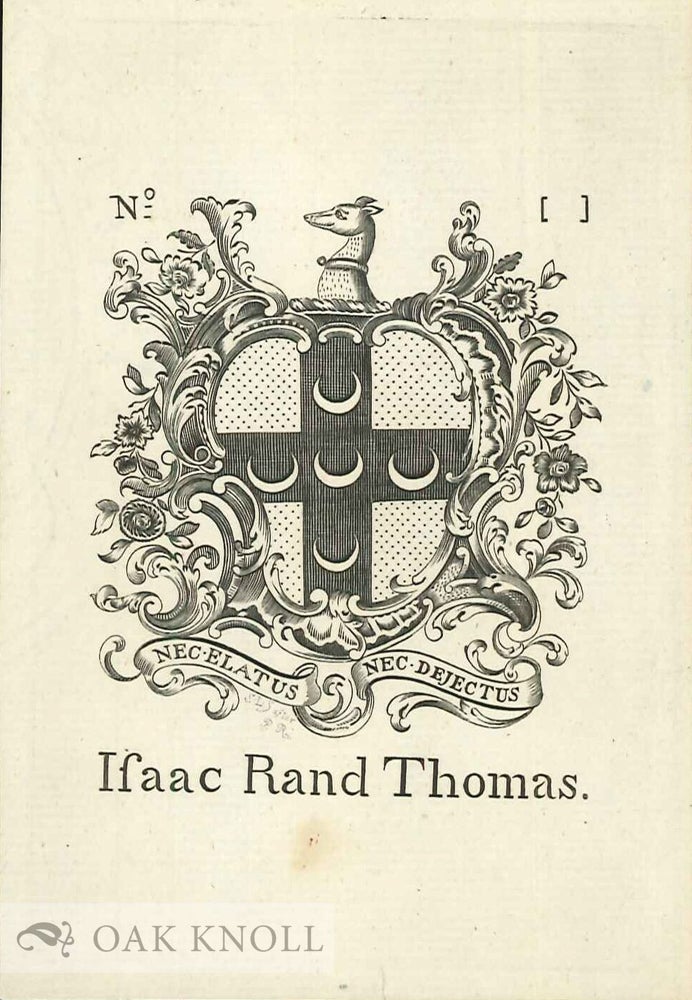C. 1870 PRODUCTION, RENDITION OF PAUL REVERE'S ENGRAVED BOOK PLATE.
- 3.25" x 4.75"
- small 12mo bookplate
Price: $550.00 save 50% $275.00 other currencies
Order Nr. 135358
Isaiah Thomas altered to "Isaac Rand Thomas" as indicated on the plate itself. Faint notation below 'TUS" in NEC-ELATUS reads, "S.L.S after P.R." Printed on early watermarked laid paper. Exceptional eye appeal and workmanship. The printer was Sidney Lawton Smith (1845-1929). Smith was an American designer, etcher, engraver, illustrator, and bookplate artist. This bookplate for Isaiah Thomas was first engraved by Paul Revere and subsequently name altered by Sidney L. Smith, Boston engraver noted for his re-engravings of Paul Revere's originals.
Sidney Lawton Smith (1845-1929) was an American designer, etcher, engraver, illustrator, and bookplate artist. Smith was born in Foxborough, Massachusetts to Lawton and Lucy Thompson Smith on June 15, 1845. He was the third of three sons. In 1847, his family moved to Canton, Massachusetts, where he was educated in the public school system.
Smith showed an interest and aptitude in artistic efforts from a young age, and in 1863, his parents sent him to apprentice to Reuben Carpenter in Boston to learn steel engraving. Although his mother admonished him to stay in his apprenticeship, in 1864 Smith enlisted with the Union Army and saw active service at the end of the Civil War.
In 1865, Smith returned to Carpenter's engraving shop, but moved on to the shop of Joseph Andrews in 1867. There, he worked on reproductions of the original etchings and woodcuts that had been issued in England with an edition of Dickens's works.
Smith began his own engraving establishment in Canton, Massachusetts. He worked on government notes for the American Bank Note Company and on book illustrations for the publisher Riverside Press. In 1877, Smith became an assistant to John LaFarge in the decoration of Trinity Church in Boston. He continued to work with LaFarge on stained glass work and decorative projects that came through LaFarge's studio in New York, until 1887.
In 1893, Smith moved his family and business to Boston. During this period, Smith worked primarily as an etcher and engraver, and a designer of bookplates. Smith's bookplate clients included notable book and engravings collectors, college and public libraries, historical and research societies, publishing houses, bookstores, and collector's clubs.
Smith died in 1929. The American Antiquarian Society holds his papers and other materials, including several bookplate drawings and engravings, copper bookplates, photographs, and his engraving tools.

